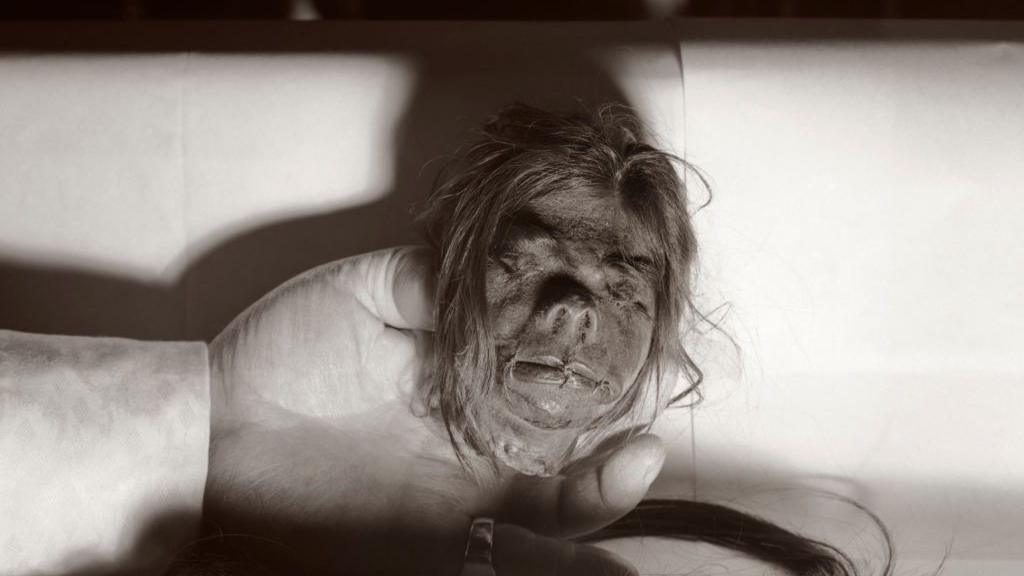Indigenous group call for shrunken heads repatriation
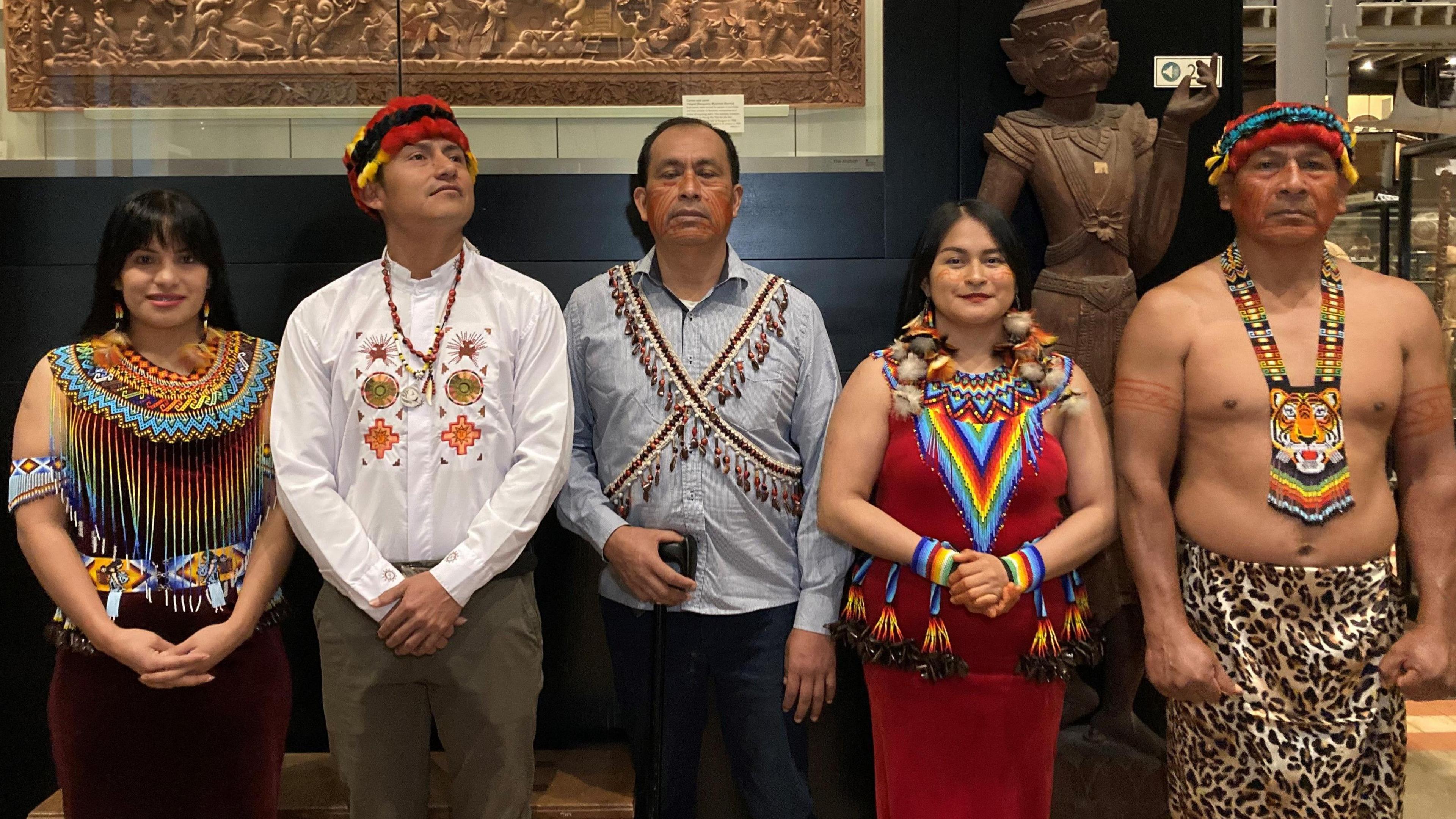
A delegation of Shuar, from Ecuador, visited Oxford this week
- Published
Cultural leaders of an indigenous Ecuadorian community have called for the repatriation of a museum's collection of shrunken heads.
The collection of human remains, also known as tsantsas, at the Pitt Rivers Museum in Oxford predominantly came from the Ecuadorian Shuar people, and were acquired between 1884 and 1936.
In 2020, the tsantsas were removed from public display as part of what the museum called a "decolonisation process", following complaints from Shuar leaders.
During a visit to Oxford this week, Shuar members repeated their calls for greater understanding of the artefacts and for them to be repatriated to Ecuador.
Speaking in Spanish through an English translator, one member of the Shuar community told the BBC: "The tsantsas are a cultural heritage from Ecuador and they should be going back to Ecuador."
"But at the same time, we'll be having conversations so that the people here in the United Kingdom can also learn about them," he added.
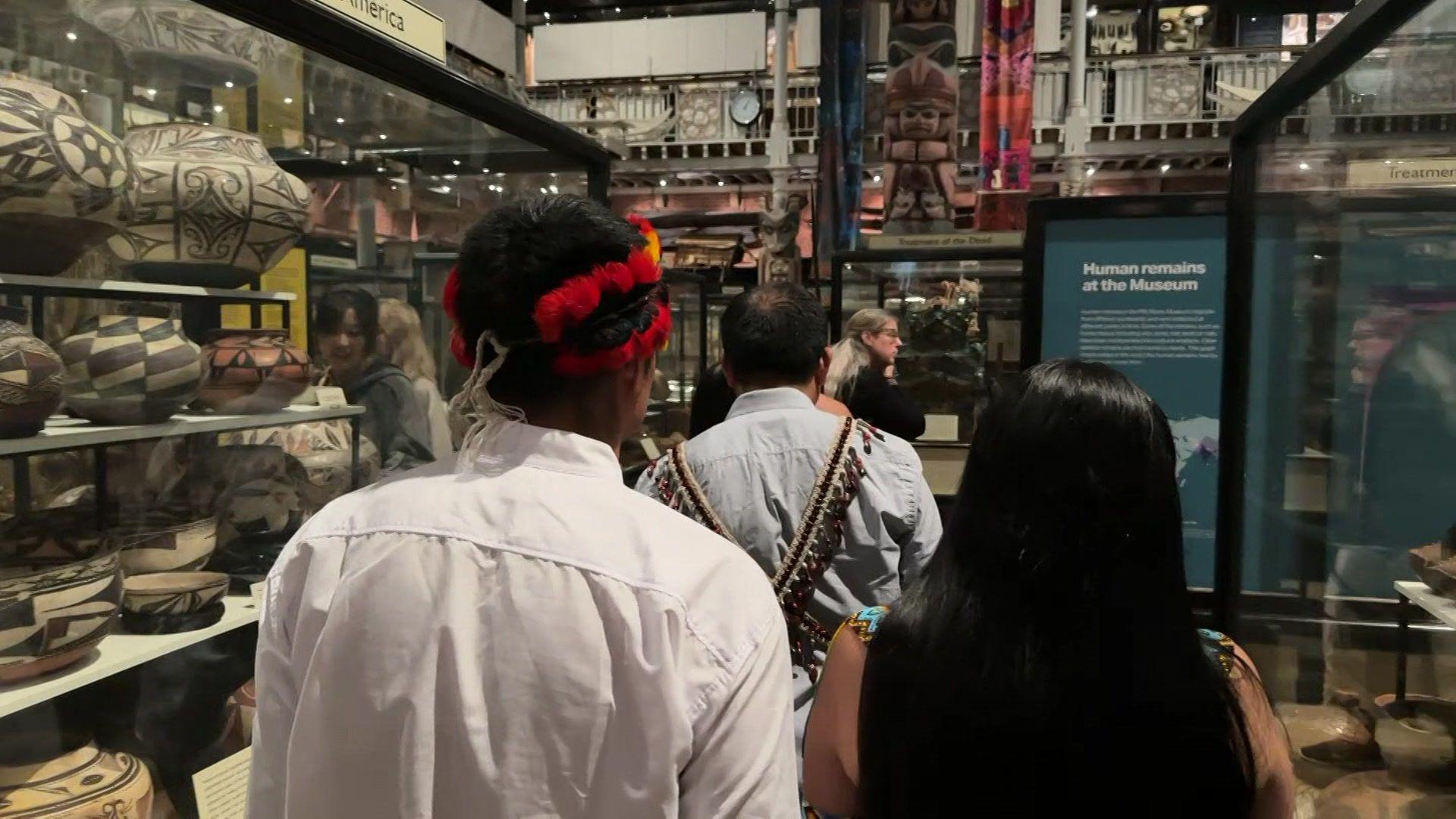
The delegation was shown around the museum as part of the visit
Jefferson Pullaguari, who was also speaking through a translator, said he had joined the delegation in Oxford to "visit his ancestors and to be very happy to see how they've been taken care of after all this time".
He said it was "very important to be able to preserve history, to preserve these types of remains and eventually to be able to have that dream of having them return beck home".
The shrunken heads were formed from human, sloth or monkey heads and were sought-after items by collectors during the 19th and 20th Centuries.
They were not "war trophies" but were in fact made to capture the power of one of the multiple souls that Shuar and Achuar people believed their men had.
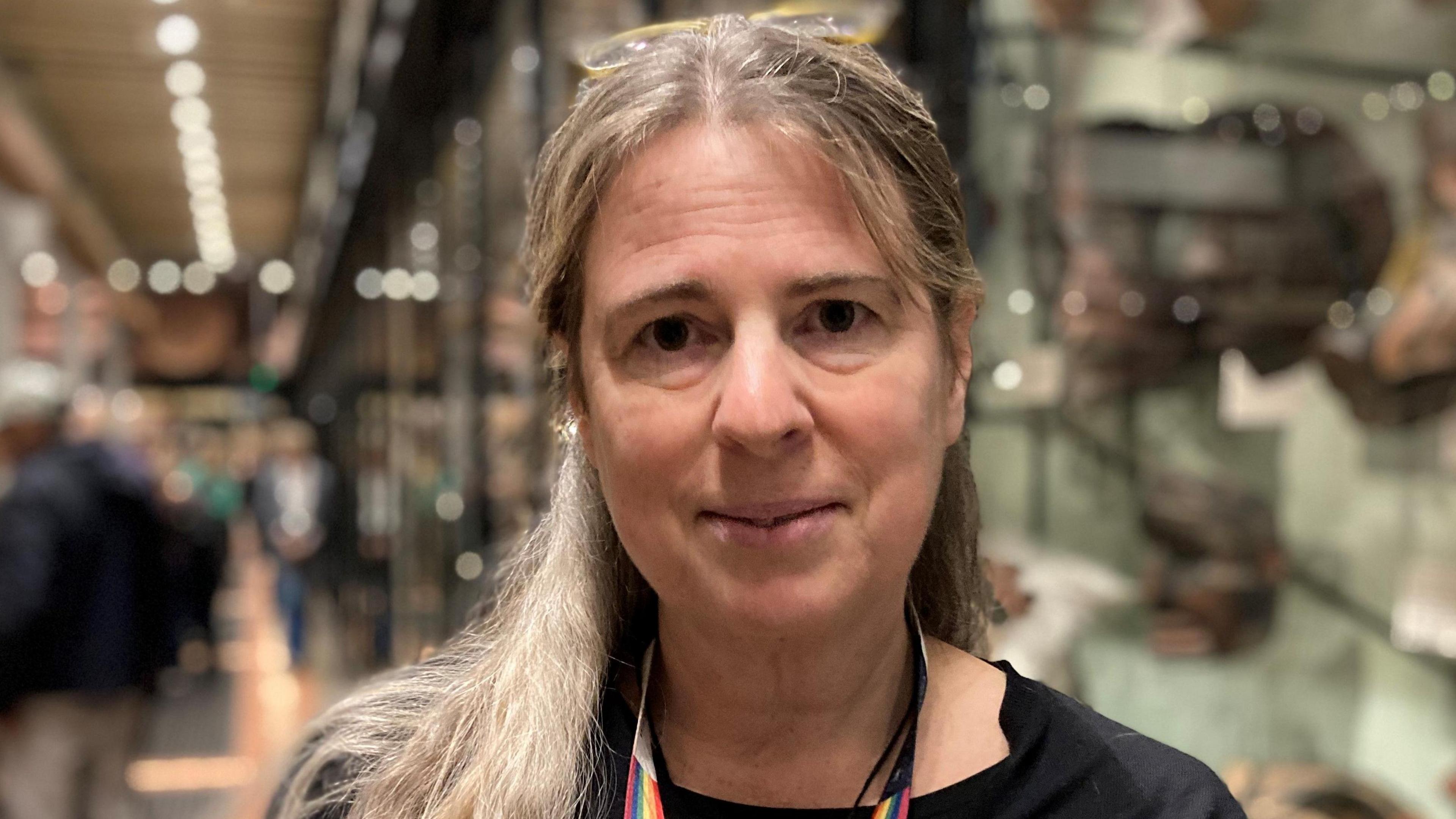
Prof Dr Laura Van Broekhoven is director of the Pitt Rivers Museum
Indigenous people have long argued against the public display of their ancestors' remains
Pitt Rivers director Prof Dr Laura Van Broekhoven said the tsantsas had previously been a "very popular" display because "they appeal to the imagination".
She said: "People were saying 'look how savage, how primitive, how gruesome, how disgusting'.
"The Shuar actually said 'that's not what we want, we don't want to be portrayed that way - if you're going to put our culture on display, please involve us'."
That request culminated in this week's visit and is part of a continuing dialogue between the museum and the Shuar about the future of the tsantsas.
Get in touch
Do you have a story BBC Oxfordshire should cover?
You can follow BBC Oxfordshire on Facebook, external, X (Twitter), external, or Instagram, external.
- Published14 September 2020
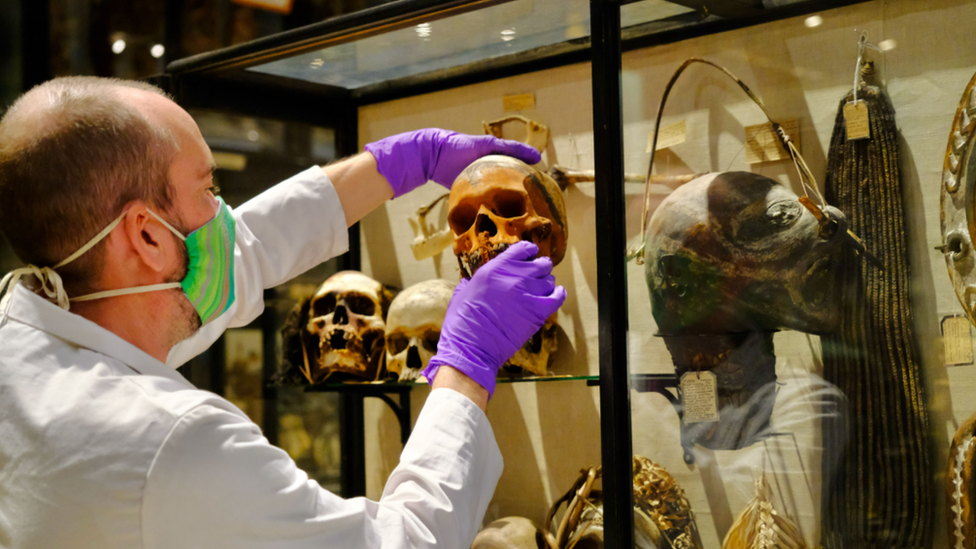
- Published9 October 2024
